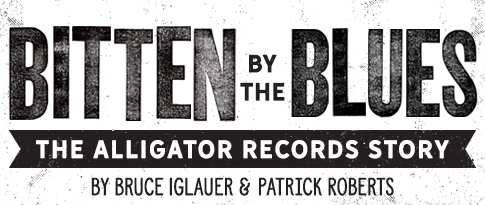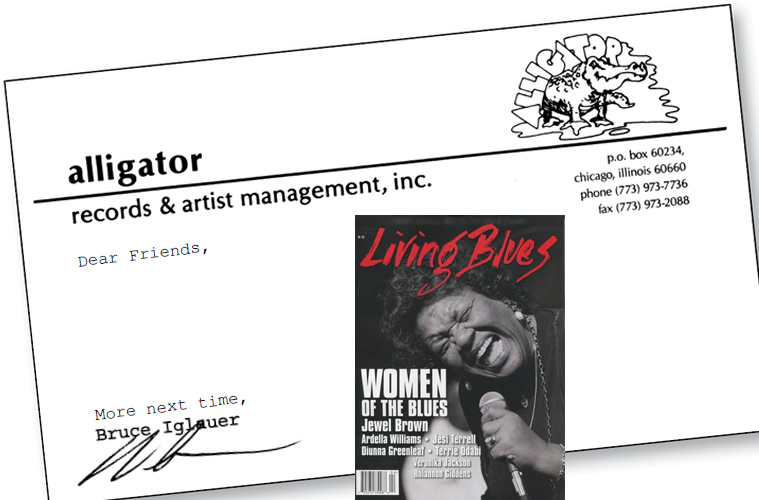Dear Friends,
As you’ve probably heard, we recently welcomed the wonderful Shemekia Copeland back to the Alligator artist roster. We first signed Shemekia when she was just 18, proudly released her first four albums, and celebrated her winning eight Blues Music Awards. With her huge voice and charisma, she was rightfully hailed as the most exciting female blues artist of her generation. Shemekia took a two-album “vacation” with the Telarc label and now she’s come back home to Alligator. All this time, Shemekia has continued to grow as an artist, exploring songs that don’t always follow traditional blues structures and lyrics, but sure feel like blues. These fresh songs have brought a whole new dimension to her music. We expect her new release in September and can hardly wait.
Johnnie Johnson almost single-handedly defined rock ‘n’ roll piano. Though he started as a jazz man, his recordings with Chuck Berry, like Maybellene, School Days, Carol and Nadine, wrote the book on how to rock the keyboard. Chuck began his career in St. Louis as guitarist with Johnnie’s band, and they toured together until Johnnie retired from music in 1973. After the 1987 Chuck Berry documentary, Hail! Hail! Rock ‘n’ Roll, Johnnie returned to the stage and the studio and released eight memorable albums of two-fisted blues and rock ‘n’ roll. A few months ago, we were made aware of an entire album of terrific unreleased performances by Johnnie with his talented friends, good-time Southern blues-rockers The Kentucky Headhunters. We’re preparing this fine, fun album, Meet Me In Bluesland, for June release. I’ll tell you more about it next time.
One of the premier blues labels in the world, Blind Pig Records, was recently sold by its founders, Jerry del Guidice and Edward Chmelewski. The buyer is The Orchard, a worldwide music distributor which has made its mark in the digital marketplace. Blind Pig began in 1977 and has released almost two hundred albums, many among the finest blues and roots recordings of the last forty years. Blind Pig has been one of our best competitors for decades, and I count Jerry and Edward as my friends. They deserve to be honored as essential contributors to the recorded legacy of the blues.
We lost another great champion of the blues when my long-time friend Graeme Flanagan, former president of the Australian Blues Society and editor of their magazine, Crazy Music, died of cancer in February. I met Graeme in 1975 when I toured Australia with Hound Dog Taylor & The HouseRockers. He was a warm, gentle man and a true blues lover.
I told you last time about meeting Bob Greenlee, the bass-playing producer/songwriter who operated a little label called King Snake Records out of his studio in Sanford, Florida. Bob had built the studio above an old garage, and was recording various regional blues artists and roots rockers like James Peterson, The Midnight Creepers and Noble “Thin Man” Watts. He was a big, outgoing and enthusiastic guy. When I met him in 1988, he was raving about a 30-year-old artist from Baton Rouge, Kenny Neal.
Kenny was one of the many musical offspring of Raful Neal, the iconic Baton Rouge harmonica player and singer who had been recording since the 1950s. While still a teenager, Kenny had played bass in Buddy Guy’s band, until Buddy encouraged him to focus on guitar. I had met Kenny in Toronto some years before, when he was leading a band with his brothers. He had seemed like a promising young artist, but we had lost touch. Bob played me Kenny’s new King Snake album called Bio On The Bayou. The performances were ear-opening, with gritty vocals, hard-edged guitar and earthy Louisiana-style harmonica. Kenny played and sang with honest soulfulness and maturity.
The recording, mix and packaging of the album were pretty basic, and it needed a couple more good songs, but Kenny’s talent was obvious. Bob convinced me to fly down to Miami for one of Kenny’s gigs. In person, Kenny’s charisma was undeniable. He was a natural on stage, singing with great confidence and soloing with both attack and subtlety. His smile lit up the room, and his energy was infectious. He mixed well-known songs with a few originals from the album. He was having the time of his life, and the audience (especially the women) loved him. He was clearly a blues star in the making.
More next time,
Bruce Iglauer

